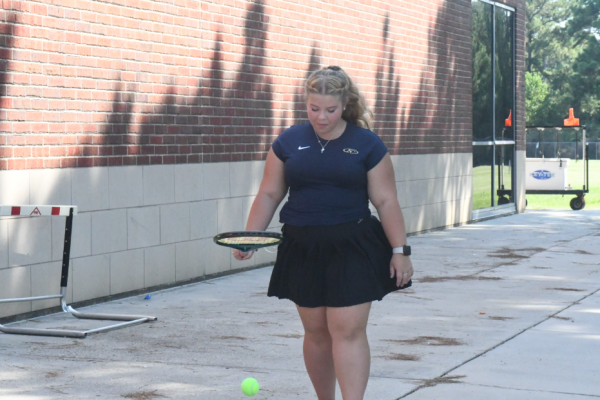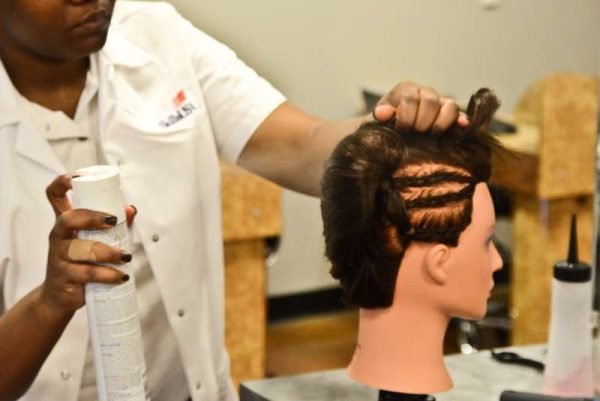Living with limits
Teacher shares experiences of daughter diagnosed with GLUT1
Addyson suffers from Glucose 1 Transporter Deficiency Syndrome. This syndrome can result in seizures and cause complications with development early in life.
English teacher Amy Green is having a busy morning.
In fact, every morning is like this for the mother of four. Between juggling three of her other drowsy children and trying to prepare herself for the day, she is also gathering everything her daughter will
need for breakfast.
It takes careful measurement and preparation to make Addyson, Green’s daughter, her usual breakfast – 50 grams of heavy cream and 10 grams of olive oil poured over two tablespoons of Cheerios.
While this might not be on the typical breakfast menu, meals like this are necessary for the four-year-old.
Addyson has Glucose 1 Transporter Deficiency Syndrome, better known as GLUT1. This syndrome can result in seizures and cause complications with development early in life.
“Addyson never had seizures, but she was way behind developmentally,” Green said. “When she was one, she could barely sit up, let alone crawl or walk. We knew something was wrong.”
The Greens went through many tests until doctors performed a spinal tap on Addyson and were able to correctly diagnose her.
“Those were some of the darkest days of my life, and I know that sounds awful to say about your own child, but I felt hopeless,” Green said. “It was probably one of the worst things my husband and I ever experienced, because we just wanted answers. We wanted to be able to figure out what was wrong, to do something and fix it. But we couldn’t, and that was really hard.”
The Greens faced many challenges and changes because of the limited knowledge available. Medical professionals used to believe GLUT1 was extremely rare, but are now finding that it is actually under-diagnosed, or misdiagnosed as epilepsy because of the seizure activity.
“Their lifestyle changed quite a bit after Addyson was diagnosed, especially because they didn’t really know what food to give her,” family friend and fellow English teacher Amber Wallace said. “It was a huge learning curve. Now, Mrs. Green pre-makes all of Addyson’s food, and all of their friends and family know to make sure that Addyson doesn’t eat what the rest of the kids eat.”
People with GLUT1 cannot transform carbohydrates into energy like other people do and must develop ketones. Ketones in a healthy body would be an indication of diabetes, but for someone with GLUT1, the ketones are essential so that their muscles and brain can function properly.
“The blood-brain barrier in a kid with GLUT1 doesn’t work with carbohydrates so no energy goes through,” Green said. “Without being on a high-fat, low-carb diet, the kids are very lethargic. They can’t move their muscles right.”
There is no cure for GLUT1, but Green believes it is possible to live a normal life with it as long as a high-fat, moderate-protein and lowcarbohydrate diet is maintained.
“The prognosis is good,” she said. “There’s no limit on how far she can progress.”















